Here’s our bi-annual list of what we’re reading, 48 books not including repeats — which, incidentally, this year ranged from more recent true stories (Theranos to Thiel/Gawker/Hulk) to more far off fiction (The Three-Body Problem). You can also catch past reading recommendations here [and bonus recs from Marc Andreessen, listed in this thread]. For now, we hope your towels and hammocks await these books… though we wouldn’t call them beach reads!
…from Katie Baynes, communications team (marketing operation)
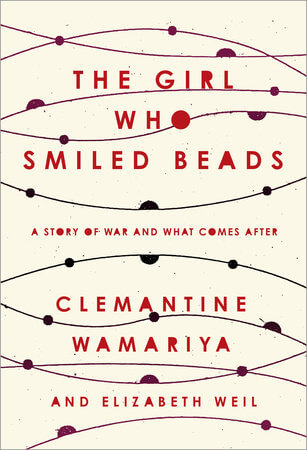 The Girl Who Smiled Beads by Clemantine Wamariya and Elizabeth Weil. Bay Area author Wamariya chronicles her childhood escape of the Rwandan genocide, recounting memories of both the cruelty — and kindness — of strangers as she struggled to survive one of the most brutal atrocities in modern history. Wamariya recounts how she and her sister fled their childhood home, trudging through seven countries over six years as refugees before finally being welcomed in America — where she went on to have a quintessential Oprah moment, graduate Yale University, and become a speaker and human rights advocate. The book interweaves heart-wrenching stories from Wamariya’s youth, as well as from her Midwestern middle-school and high school years, where she grapples with her identity and external perceptions of what it means to be a refugee in America. This is a timely and poignant read as so many children like her fight for their lives across the globe. This account doesn’t just put a face on the victims of war, it puts a beating heart in their chests.
The Girl Who Smiled Beads by Clemantine Wamariya and Elizabeth Weil. Bay Area author Wamariya chronicles her childhood escape of the Rwandan genocide, recounting memories of both the cruelty — and kindness — of strangers as she struggled to survive one of the most brutal atrocities in modern history. Wamariya recounts how she and her sister fled their childhood home, trudging through seven countries over six years as refugees before finally being welcomed in America — where she went on to have a quintessential Oprah moment, graduate Yale University, and become a speaker and human rights advocate. The book interweaves heart-wrenching stories from Wamariya’s youth, as well as from her Midwestern middle-school and high school years, where she grapples with her identity and external perceptions of what it means to be a refugee in America. This is a timely and poignant read as so many children like her fight for their lives across the globe. This account doesn’t just put a face on the victims of war, it puts a beating heart in their chests.
…from LeeAnn Cabellero, events team (marketing operation)
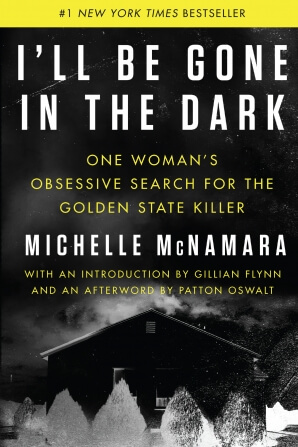 I’ll Be Gone In the Dark by Michelle McNamara. This was so good… and so haunting. The author committed herself to an admittedly obsessive hunt to identify the violent predator known as the Golden State Killer, who for decades eluded capture across California. She doesn’t shy away from the details, and in exploring a truly horrific and sick mind, reveals her own careful, humanistic, and ambitious approach, periodically self-examining her own fascination with the entire case. The fact that the author herself died tragically while writing the book, makes it all the more gripping.
I’ll Be Gone In the Dark by Michelle McNamara. This was so good… and so haunting. The author committed herself to an admittedly obsessive hunt to identify the violent predator known as the Golden State Killer, who for decades eluded capture across California. She doesn’t shy away from the details, and in exploring a truly horrific and sick mind, reveals her own careful, humanistic, and ambitious approach, periodically self-examining her own fascination with the entire case. The fact that the author herself died tragically while writing the book, makes it all the more gripping.
Lives in Ruins: Archaeologists and the Seductive Lure of Human Rubble by Marilyn Johnson. As a onetime archaeologist-in-training and current archaeology geek, I loved this book — not just for examining the practice itself, but especially for exploring the people who dedicate themselves to it. But if you’re looking for a story about Indiana Jones-style renegades, you’re looking in the wrong place; this is a realistic look at what it’s like to be in the field, working hard to reveal and preserve history.
…from Martin Casado, general partner
The Drunken Botanist by Amy Stewart. A detailed reference of the overlap between two of the most divine creations on the planet: botany and booze.
…from Andrew Chen, general partner
The Three-Body Problem by Cixin Liu. This sci-fi novel by Chinese writer Liu Cixin was first published in China in 2008; the English translation by Ken Liu won the 2015 Hugo Award for Best Novel. The book is the first in a trilogy that spans hundreds of years, and has a fresh take on Earth’s situation in a hostile universe. It feels incredibly fresh, creative, and distinctly different from American sci-fi.
…from Frank Chen, deal (research and investing) operation
The Gene: An Intimate History by Siddhartha Mukherjee. A beautiful and sprawling history of how we got to know what we know about genes and our biology. Mukherjee does a great job bringing each figure, each meeting, and each turning point to life…
 China’s Great Wall of Debt: Shadow Banks, Ghost Cities, Massive Loans, and the End of the Chinese Miracle by Dinny McMahon. China’s economic ecosystem is astounding, but this book does a good job walking through some of the challenges maintaining the growth. The biggest question that surfaces again and again is whether the government has the political will to let cities, regions, or companies fail — or whether it will just re-finance failing entities as long as it has money.
China’s Great Wall of Debt: Shadow Banks, Ghost Cities, Massive Loans, and the End of the Chinese Miracle by Dinny McMahon. China’s economic ecosystem is astounding, but this book does a good job walking through some of the challenges maintaining the growth. The biggest question that surfaces again and again is whether the government has the political will to let cities, regions, or companies fail — or whether it will just re-finance failing entities as long as it has money.
Postcards from Tomorrow Square: Reports from China by James Fallows. Though published in 2008, this book on China’s cultural, political, and social forces is still very fresh and is a great companion to the above book on China.
Timekeepers: How the World Became Obsessed With Time by Simon Garfield. A fun collection of essays on time, covering a wide-ranging set of topics from the major protests cities waged to fight “standard time” (so the trains could run on time) to life in a just-in-time auto factory to how the length of a LP/CD was set. I love books that show what life was like before things we take for granted got settled.
…from Sonal Chokshi, editorial team (marketing operation)
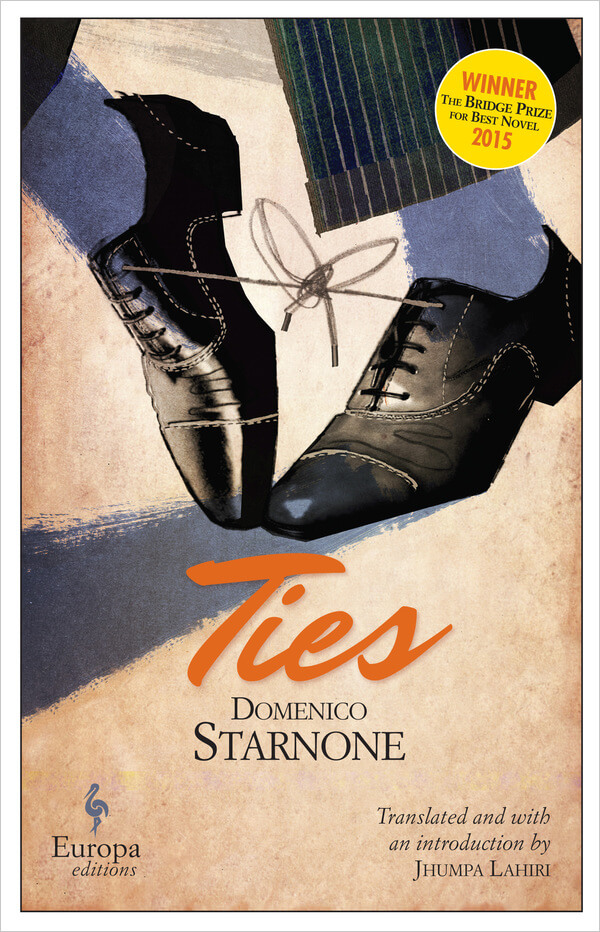 Ties by Domenico Starnone, translated by Jhumpa Lahiri. This book — about the complex ties of family relationships — is short and can easily be finished in one sitting, yet really stays with you for a long time. It’s funny how these reading lists are like recommendations within recommendations, because I first heard about this book from Tyler Cowen’s reading list! And even the translation and introduction by Lahiri offers a matryoshka-doll like layering. (Quite frankly, I think the introduction itself may be Lahiri’s best work — but I recommend reading it after, not before, Starnone’s novel.)
Ties by Domenico Starnone, translated by Jhumpa Lahiri. This book — about the complex ties of family relationships — is short and can easily be finished in one sitting, yet really stays with you for a long time. It’s funny how these reading lists are like recommendations within recommendations, because I first heard about this book from Tyler Cowen’s reading list! And even the translation and introduction by Lahiri offers a matryoshka-doll like layering. (Quite frankly, I think the introduction itself may be Lahiri’s best work — but I recommend reading it after, not before, Starnone’s novel.)
The Three-Body Problem by Cixin Liu (translated by Ken Liu); The Dark Forest (translated by Joel Martinsen); and Death’s End (translated by Ken Liu). I still can’t believe that this trilogy is being turned into a three-season series reportedly optioned by Amazon for ONE BILLION (yes that’s a b!) dollars… But can’t wait to see it come to life on screen; I feel confident that the scope and techniques of modern TV will do it justice both visually and viscerally. It’s also extremely gratifying to finally see a distinctly non-Western point of view slowly hit the mainstream… So many of us are exposed only to the “canon” of dominantly Western literature, and even while immersed in the SFF genre my whole life and constantly exposed to the latest, I only recently started coming across more truly diverse works. So this phenomenon is really something special, and is already a harbinger of more to come. The opening scenes in the first book drive home the consequences of the Cultural Revolution in a way no history book (or even an intimate memoir à la Jung Chang’s Wild Swans) ever could. The book was also stunning in Liu’s use of analogies and games as tools for explanation and persuasion. And while I found myself slogging a bit through the second book (perhaps due to the different translation, or due to the scope of time and characters covered), it presented two interesting mental models: that of “Wallfacers” (which can be applied to companies too), and of the Dark Forest Problem (which is related to the Fermi Paradox and Drake Equation). Seriously, read this series! Your worldview will be forever changed.
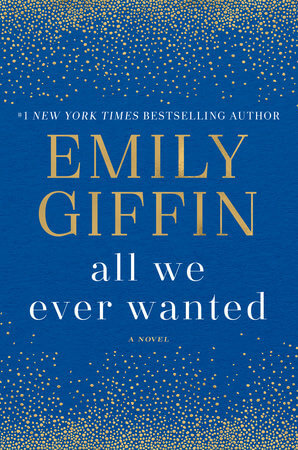 All We Ever Wanted by Emily Giffin. I love so-called “chicklit”, whether it’s about the frivolous adventures of a shopaholic, or about the tender nuances of relationships of all kinds. The latter is represented so well in all of Giffin’s books — and her latest does not disappoint. It’s also totally of the moment, exploring tricky MeToo questions such as how do mothers of men, and fathers of women, feel?
All We Ever Wanted by Emily Giffin. I love so-called “chicklit”, whether it’s about the frivolous adventures of a shopaholic, or about the tender nuances of relationships of all kinds. The latter is represented so well in all of Giffin’s books — and her latest does not disappoint. It’s also totally of the moment, exploring tricky MeToo questions such as how do mothers of men, and fathers of women, feel?
Why Therapy Works: Using Our Minds to Change Our Brains by Louis Cozolino. You could stop at the opening chapter on “Why Humans Need Therapy” and get a lot out of this book, especially if it convinces you to try therapy; but if you’re further along on that journey and just want to understand how and why it works, then you’ll keep on reading. Cozolino sums up decades of research and practice in a simple yet not overly reductionist/pop-sci way, distilling the why down to a fundamental “processing gap” between two systems in our brains/minds. Whatever you may decide to label those two systems — going beyond the politics of Freud or Jung like I did to borrow from other frameworks — such as the “system 1” and “system 2” presented by Daniel Kahneman or “the two you’s” outlined by top investor Ray Dalio — they all have in common that there are two distinct systems of mind always in conflict: one more reflective, calculated, learned, rational; the other more subliminal, automatic, instinctive, emotional. Therapy, quite simply, helps us bridge that gap.
…from Jay Conte, executive talent operation
The Charm School by Nelson DeMille. Mrs. Ivanova’s Charm School has held American MIA’s since the Vietnam War, keeping them captive in a makeshift mockup of an American town — to teach Soviet spies how to be more American. This is a work of fiction that will make you think the author might know more than the rest of us: an unbelievable, yet all too real, thriller.
…from Joel de la Garza, chief information security officer
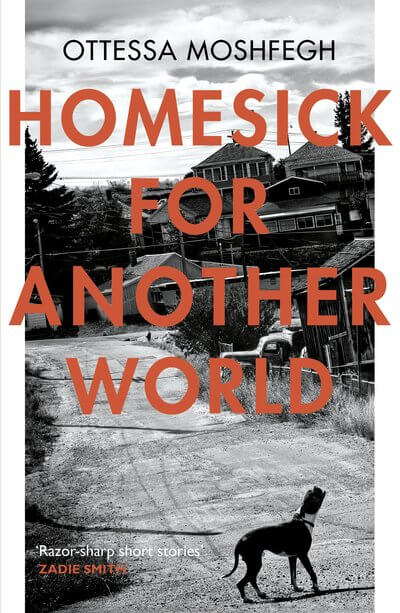 Lipstick Traces: A Secret History of the Twentieth Century by Greil Marcus. This book focuses on the history and culture of punk rock, but is about more than music. It’s about the nature of disruption, and I believe the DIY punk ethos finds similar corollaries in technology.
Lipstick Traces: A Secret History of the Twentieth Century by Greil Marcus. This book focuses on the history and culture of punk rock, but is about more than music. It’s about the nature of disruption, and I believe the DIY punk ethos finds similar corollaries in technology.
…from Jack Donahoe, legal team
The Wright Brothers by David McCullough. In this very entertaining and inspiring story of iconic entrepreneurs/inventors, my biggest takeaways were: (1) that unshakeable perseverance becomes possible if a person’s deepest held principles match their actions; and (2) that a lot of reading — and trial-and-error — are underrated methods of pursuing even extremely ambitious projects.
Rubicon: The Triumph and Tragedy of the Roman Republic by Tom Holland. This page-turner about the last century of the Roman Republic is centered on its declining cultural and political institutions — and the corresponding rise of firebrand populism, political-tribal violence, and aspiring despots — echoes recent shifts too.
The Rational Optimist: How Prosperity Evolves by Matt Ridley. Building an effective argument that trade and specialization of labor have been — and will continue to be — the keys to unlocking human prosperity, this book describes how those forces allow groups/markets of people to collaboratively innovate. The author argues that this phenomenon (what he calls “ideas having sex”) is where the level-up moments in human prosperity really come from. This book actually made me more optimistic about the future.
…from Emily Graff, technical talent operation
Bad Blood: Secrets and Lies in an Silicon Valley Startup by John Carreyrou. I read this in two days because I couldn’t put it down! The book answers so many questions about Theranos, a story of ambition that quickly turned into a web of lies.
Einstein: His Life and Universe by Walter Isaacson. Besides being an obviously brilliant mind, Albert Einstein was a fierce pacifist, a loyal friend, and had a great sense of humor. An Isaacson biography is always a treat, but he made the physics enjoyable to me as well.
…from Lydia Green, firm ops
Homesick for Another World: Stories by Ottessa Moshfegh. Heartbreaking, creepy, hilarious, and exquisitely written. If you’re a fan of short story collections, this is a great one.
…from Dave Jagoda, engineering team (firm ops)
ECONned: How Unenlightened Self Interest Undermined Democracy and Corrupted Capitalism by Yves Smith. Still relevant ten years after the Great Financial Crisis. You probably know about Lehman Weekend, but how about the Magnetar Trade?
…from Li Jin, deal (research and investing) operation
How to Turn Down a Billion Dollars: The Snapchat Story by Billy Gallagher. This book recounts not just the fascinating history of Snapchat, but of how Evan Spiegel’s life and upbringing influenced the product and company he built.
…from Jeff Jordan, general partner
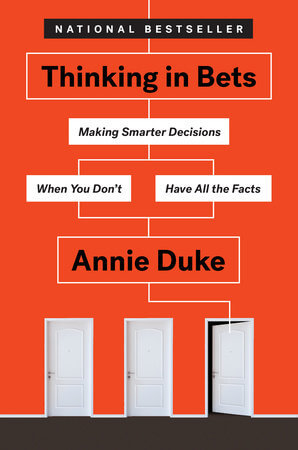 Play Their Hearts Out: A Coach, His Star Recruit, and the Youth Basketball Machine by George Dohrmann. Fascinating look at the excesses of AAU (Amateur Athletic Union) basketball and the corrupting influence of sneaker money in the sport. Foreshadowed the current payola scandals in college basketball.
Play Their Hearts Out: A Coach, His Star Recruit, and the Youth Basketball Machine by George Dohrmann. Fascinating look at the excesses of AAU (Amateur Athletic Union) basketball and the corrupting influence of sneaker money in the sport. Foreshadowed the current payola scandals in college basketball.
Conspiracy: Peter Thiel, Hulk Hogan, Gawker, and the Anatomy of Intrigue by Ryan Holiday. The backstory behind the Gawker vs. Peter Thiel headlines — turns out it was many years in the making. And the author secured the cooperation of most of the principals.
…from Jonathan Kroll, market development operation
Ahead in the Cloud: Best Practices for Navigating the Future of Enterprise IT by Stephen Orban. Written by an AWS executive, this book offers first-hand accounts of the complexities and challenges confronting enterprise companies as they modernize their organizations. Successful “digital transformation” isn’t guaranteed, and in fact succeeds only with a substantive cultural embrace that starts with the most senior ranks of the organization.
Principles: Life and Work by Ray Dalio. An anthology of wisdom that is an impressive synthesis of a successful career. According to Dalio, Pain + Reflection = Progress — and there is so much reflection here, it was no doubt painful to compile!
The Design of Everyday Things by Don Norman. This book forces you to think about product design through a set of principles. We get abstractions that apply to almost all types of products, from physical to digital. It’s a must-read, and applies as much today as it did 30 years ago.
…from Jeffrey Low, bio team
Our Kids: The American Dream in Crisis by Robert Putnam. Known for his classic work, Bowling Alone, which chronicled the decline of American civic life, Putnam’s follow-up offers a new look at the state of upward mobility in America. But it is, again, a sad story: In Putnam’s boyhood 1950s Ohio, all of “our kids”, rich or poor, grew up to be more prosperous than their parents. Since then the fates of rich and poor kids — no longer “our kids” but now “their kids” — have diverged significantly. The book provides a snapshot of different slices of American experience while identifying the practices and resources that rich parents have to get their kids ahead, putting the American dream more out of reach for many.
Leonardo Da Vinci by Walter Isaacson. What does a woodpecker’s tongue look like? What muscles make us smile? The driving force behind Da Vinci’s genius is actually attainable for us mere mortals and can be distilled into this lesson: stay curious. Isaacson offers a look into one of history’s great minds and polymaths in this book.
Dear Chairman: Boardroom Battles and the Rise of Shareholder Activism by Jeff Gramm. In a series of historical vignettes, Gramm chronicles the rise of shareholder activism, from Benjamin Graham’s push to return unneeded cash at Northern Pipeline to the rise of modern proxy campaigns run by activist hedge funds. Though sometimes feared by CEOs today, shareholder activism, the author argues, marked a turn in the history of capitalism where stockholders began to take some of their rightful control back from managers who had long run companies for their own benefit rather than that of shareholders.
Measure What Matters: How Google, Bono, and the Gates Foundation Rock the World with OKRs by John Doerr. Doerr extols the virtues of OKRs (Objectives and Key Results), a system of goal-setting and performance-management behind the success of organizations (and people) such as the ones named in the title. This is a great read for organizations/people who live in a chaotic world pulling them in all directions, because it’s all about operationalizing excellence.
…from Jamie McGurk, corporate development operation
Why We Sleep: Unlocking the Power of Sleep and Dreams by Matthew Walker. This is a really eye-opening insight into (exactly what the title says) why we sleep — but more importantly, the author explains the positive effects of sleeping and the negative effects of not sleeping enough, at every life stage and across species. This book will make you re-evaluate your sleeping habits.
In the Temple of Wolves: A Winter’s Immersion in Wild Yellowstone by Rick Lamplugh. After the reintroduction of wolves into Yellowstone National Park, Lamplugh spends a winter season studying the wolves and their behaviors, speaking with experts and watching them in the wild. I gained a true appreciation for the role of each species, and it further brought to life (pun intended) the phenomenon of “trophic cascades”, where the interaction between predators and prey affect entire ecosystems.
Season of the Witch: Enchantment, Terror, and Deliverance in the City of Love by David Talbot. A deep dive into the events that shaped San Francisco beginning in 1967 and continuing through the early 1980s — Jim Jones! Harvey Milk! Jefferson Airplane! Patty Hearst! Joe Montana! — this book is a must-read for any SF resident, or anyone interested in what the city culturally represents.
Thinking in Bets: Making Smarter Decisions When You Don’t Have All the Facts by Annie Duke. Best known as a World Series of Poker champion, Duke is less known as an Ivy League doctoral candidate in psychology. Her book examines the intertwining roles of strategy and luck in decisions — especially in the absence of full information — and encourages sound and confident decision making that separates the observed outcome from the decision.
Born to Run by Bruce Springsteen. There’s the music, but there is also the blue collar guy behind the fame (who never really seemed comfortable with said fame). Written by The Boss in the very voice you would hope for.
…from Denis Nazarav, a16z crypto fund
Radical Markets: Uprooting Capitalism and Democracy for a Just Society by Eric Posner and E. Glen Weyl. Explores new ideas for constructing markets, and property rights, in ways that could be potentially better than what we have today.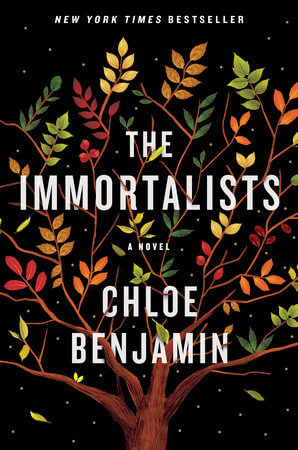
The $12 Million Stuffed Shark: The Curious Economics of Contemporary Art by Don Thompson. This book explains the economics — and the psychology — of the contemporary art world.
…from Elizabeth Ocken, events team (marketing operation)
The Great Alone by Kristin Hannah. I haven’t been to Alaska yet (on my list of places to get to soon) but now I feel like I’ve been there, thanks to this book. The way the author describes Alaska is almost as dramatic as the story and the drama of its characters… I loved every second of this book!
…from Steven Sinofsky, board partner
The Captured Economy: How the Powerful Enrich Themselves, Slow Down Growth, and Increase Inequality by Brink Lindsey and Steven Teles. For some perspective on the rise in inequality (think Thomas Piketty), this book offers a readable set of observations around “regulatory capture” and “rent seeking” that aim to build a thesis of how winners can continue to win, slow growth, and increase inequality. The self-described liberal and libertarian authors break down the current state of affairs in a non-partisan way, looking at finance, intellectual property, licensing, and land use. Each of these are tools used, intentionally or not, by rent-seekers and “winners” to raise prices. (A great example we see here in the Bay Area is how zoning laws benefit incumbents, decrease available housing, and increase prices of housing for all — the winners keep winning.) This book is not about liberal or conservative, but about structures and systems, especially those that seem to have clearly positive benefits when they start but over time tilt towards enriching winners. It’s an accessible, clear, and worthwhile read.
…from Nicole Stanners, chief of staff
Bad Blood: Secrets and Lies in an Silicon Valley Startup by John Carreyrou. This book offers a fascinating account of Theranos and the false promise of a “mythical technology”.
…from Hanne Tidnam, editorial team (marketing operation)
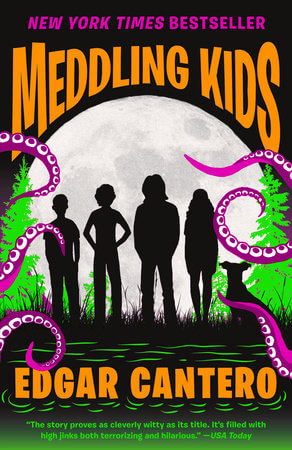 Meddling Kids by Edgar Cantero. This entire book reads like a graphic novel in neon (which explains the perfect cover). Equal parts Scooby Doo, Nancy Drew, Enid Blyton, and Shirley Jackson, I devoured this novel in one long night and felt like I had taken a vacation in a 1970s summer horror flick. Cantero brilliantly plays with genre-bending twists on classic children’s literature that’s gone and grown up — in the vein of works like The Magicians and Stranger Things. The book is a deliciously fast-paced narrative treat (and I’m betting the Netflix version won’t be far behind; someone option this!).
Meddling Kids by Edgar Cantero. This entire book reads like a graphic novel in neon (which explains the perfect cover). Equal parts Scooby Doo, Nancy Drew, Enid Blyton, and Shirley Jackson, I devoured this novel in one long night and felt like I had taken a vacation in a 1970s summer horror flick. Cantero brilliantly plays with genre-bending twists on classic children’s literature that’s gone and grown up — in the vein of works like The Magicians and Stranger Things. The book is a deliciously fast-paced narrative treat (and I’m betting the Netflix version won’t be far behind; someone option this!).
The Immortalists by Chloe Benjamin. What would the knowledge of your exact date of death actually do to your life? What makes it real — your supposed knowledge of it, or something else more mysterious? These are the questions Benjamin toys with through the lives of the four Gold children after their fortunes are told, as they move from childhood into adolescence and beyond with vivid colors and lives brightly lived. The book is divided into four sections for each sibling, who struggle to deal with their fates — from NYC’s Lower East Side through San Francisco, in the 1980s to the present day. Benjamin forces us to consider that very big notion of whether our lives unfold through the choices we make… or whether stronger currents drive those choices.
…from Daljeet Virdi, engineering team
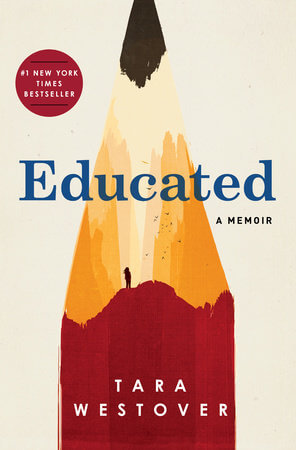 Art, Time, and Technology by Charlie Gere. Examines how “real time” information systems and instantaneous communication is changing art. Plus it has quotes from many of my favorite sci-fi authors:)
Art, Time, and Technology by Charlie Gere. Examines how “real time” information systems and instantaneous communication is changing art. Plus it has quotes from many of my favorite sci-fi authors:)
The Futurists edited by Alvin Toffler. A selection of awesome essays from 1972 exploring futurism, but relevant to tech trends today.
…from Margit Wennmachers, marketing operation
Conspiracy: Peter Thiel, Hulk Hogan, Gawker, and the Anatomy of Intrigue by Ryan Holiday. A gripping read on the case and how it was architected — both sides went on the record — this book also includes lots fascinating references of other historical conspiracies at top.
Educated: A Memoir by Tara Westover. A beautifully written memoir about all this woman overcame: from no birth certificate or schooling to ending up with a PhD degree. Impressive.
-

a16z editorial

